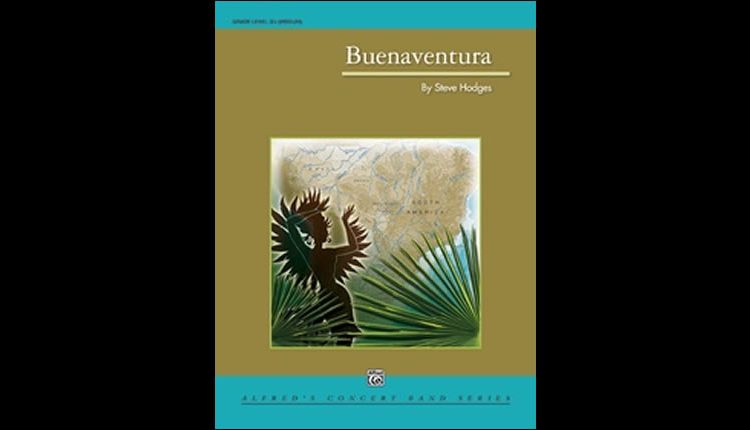Title: Buenaventura
Composer: Steve Hodges
Publisher: Alfred Music
Length: 3:30
Grade Level: 3 ½ (Medium)
Buenaventura is a good choice for contrast and variety in programming. It is a fast, high-powered piece that features Latin percussion requiring seven players.
The theme is introduced at a pensativo, quarter note equals 84. The alto saxophone is given a lyrical solo leading to a section marked, energico in alla-breve (cut time) of a half note equals 120.
The mood quickly shifts to one of high energy as the xylophone and hi-hat cymbal play a syncopated rhythmic figure. Four measures later the trombones, flutes, oboes, and full Latin percussion enter. This effect creates a crescendo leading a fast-moving rhythmic section.
The percussion must play their parts with a “togetherness” that will hold everything together musically. This selection is a busy but enjoyable piece for your percussionists.
The piece continues with the Latin beat until about three quarters into the composition where it suddenly shifts to a jazz feel of four beats to a measure. Now the tuba, bass clarinet, baritone saxophone, and bassoons are asked to play a walking bass line. This effect really doesn’t accomplish anything different or interesting. It lasts for six measures and then goes immediately back to the Latin syncopated beat. Perhaps having the percussion and bass instruments tacet for these six measures would provide a degree of change and interest leading back to the Latin syncopated beat.
An effective modulation from the key of A-flat major to B-flat major approaching the end of the composition provides a nice lift,. The piece builds nicely and ends with a clever rhythmic effect.
A very whimsical effect occurs in a short section of the composition, where the flutes and first clarinets play in unsion with the tuba (three octaves apart). This effect is enhanced by the addition of a xylophone playing the same montuno-like rhythmic figure.
Buenaventura requires the dynamics to be carefully observed in order to achieve variety in the overall sound.
The first trumpet range extends to G on top of the treble clef. The trombones are in a comfortable range with F above the staff being the highest note for the first trombone. The first French horn is required to play up to a G above the staff.
This piece makes for good programming as a selection that adds variety and contrast. The rhythmic excitement will be infectious with your students.


